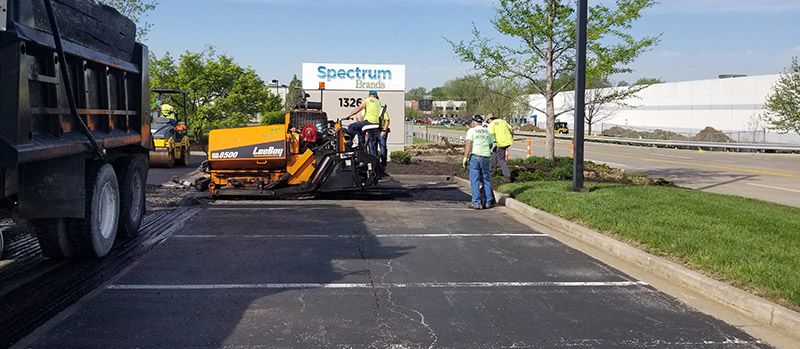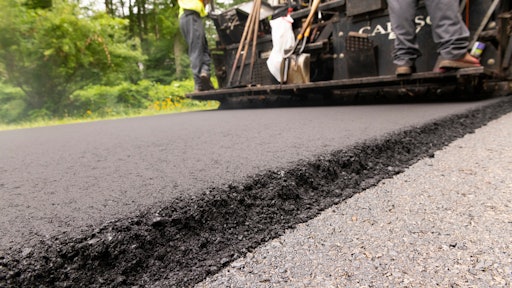Indicators on A1 Professional Asphalt & Sealing Llc You Should Know
Not known Details About A1 Professional Asphalt & Sealing Llc
Table of ContentsThings about A1 Professional Asphalt & Sealing LlcExamine This Report about A1 Professional Asphalt & Sealing LlcThe smart Trick of A1 Professional Asphalt & Sealing Llc That Nobody is Talking AboutSome Ideas on A1 Professional Asphalt & Sealing Llc You Should KnowAbout A1 Professional Asphalt & Sealing Llc

The oil in an auto engine is not simply oil. It has a range of additives to boost the automobile's efficiency. These include polymers, thickness modifiers, warm stabilizers, additional lubricating substances, and wear ingredients. The REOB consists of all the additives that were in the waste oil as well as the wear metals from the engine (generally iron and copper).
However, by making lots of blends using different REOB examples and various asphalt binders, the variants largely can be averaged out. A number of States provided samples of recognized REOB make-up to TFHRC scientists, who examined the samples to contrast the percent of added (known) REOB to the discovered (checked) amount. The analyses showed a similar percent of included and located REOB.
The Ultimate Guide To A1 Professional Asphalt & Sealing Llc
They received an overwhelming response. The TFHRC scientists examined 1,532 examples from 40 States, one Canadian province, and two Federal Lands Freeway divisions. They analyzed each example twiceamounting to more than 3,000 analyses. None of those States recognized that the asphalt they were getting had REOB. One State urged its samples had no REOB.
Of the 1,532 samples evaluated, 12 percent included REOB, and some contained appreciably high degrees of it at 1020 percent. The highest degree was 34 percent in an example from Texas, which TxDOT had used in a patching substance. This testing additionally revealed the presence of phosphoric acid in 11 percent of the examples, and 2 percent included ground tire rubber.
2 years back at TRB's annual meeting, the Federal researchers held an REOB workshop and offered the searchings for of their lab analyses to a standing room-only group. Some companies do not specifically outlaw REOB, they do impose physical examinations that preclude its useeffectively a restriction. Others do not ban it by specification, however have agreements with asphalt providers to prevent using REOB
How A1 Professional Asphalt & Sealing Llc can Save You Time, Stress, and Money.
A handful do enable REOB, some within particular limits. As an example, Ohio and Texas restriction degrees to less than 5 percent of the asphalt. To develop a reliable test technique that all States can make use of, the TFHRC scientists set up a round-robin examination strategy. The participants are 11 State highway companies (Illinois, Massachusetts, Minnesota, Mississippi, Montana, North Carolina, Oklahoma, South Carolina, Texas, Vermont, and Wyoming), 2 independent screening laboratories, the Ministry of Transportation in Ontario, Queen's University in Ontario, and an Ontario paving contractor.
In total amount, the researchers prepared and shipped 720 blends. The participants are evaluating the samples independently using the guidelines provided by the TFHRC researchers. The round-robin screening is almost completed, and TFHRC is in the process of accumulating the outcomes. The outcome will be a proposed AASHTO examination method that any type of State can embrace and use (diagonal parking vs straight parking).
The pavement with REOB, which is located 0.6 mile (1 kilometer) from the sidewalk without REOB, has similar subgrade, web traffic density, and environment. The section of Highway655 with 5 to 10 percent REOB showed considerable splitting. In this example, the visibility of REOB was the determined root cause of cracking at a low temperature levels.
An area of examination sidewalk in Minnesota (MN1-4) found to have REOB also split prematurely. The pavement executed well for the first 3 to 4 years, but after that began to split.
The Ultimate Guide To A1 Professional Asphalt & Sealing Llc
The tests were not considerable, yet they showed that at degrees of 6 percent or more, the tensile stamina of the asphalt went down see this considerably. At a degree of 3.5 percent REOB, the variant in the physical test approaches was more than the result of REOB. It was challenging for scientists to examine whether REOB was existing. https://www.pubpub.org/user/john-tally.

One binder parameter considered is the distinction between the low temperature crucial spec temperature level for rigidity (S) in the flexing light beam rheometer and the bending light beam rheometer creep slope (m-value) noted as Tcritical. TC = TC (S) TC (m-value). Assessment of this parameter is still recurring. 2 independent research teams, one from AASHTO and the other from the Asphalt Institute, ended that even more research study is required on the use of REOB in asphalt.
Formerly, all asphalt testing measured design buildings such as stiffness. These tests do not reveal what products had been included to the asphalt.

What Does A1 Professional Asphalt & Sealing Llc Mean?
These outcomes show there are weaknesses in the standardized engineering screening methods that might be made use of. The manufacturer might have a financial benefit and the product passes all the standardized tests, yet the item might not be helpful to making sure long-term efficiency. To resolve this concern and the expansion of brand-new asphalt ingredients and extenders, TFHRC is beginning a study program to utilize handheld spectroscopic devices, x-ray fluorescence spectroscopy, and Fourier change infrared spectroscopy to make it possible for evaluations to be carried out in the field as opposed to needing to take examples back to the lab.